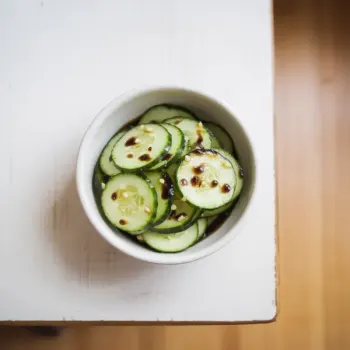
 30 minutes
30 minutesThese classic French crêpes are anything but fussy. With a simple yet elegant combination of lemon and sugar, they transform into a delightful treat that belies the simplicity of their preparation. This recipe demystifies the process, offering clear, step-by-step guidance to achieve the perfect thin and tender crêpe without the need for specialized equipment.


Vegetable Oil, for skillet
teaspoons
Unbleached All-Purpose Flour
0 oz
Sugar, for batter and sprinkling
teaspoons
teaspoons
cups
Eggs, large
each
Unsalted Butter, melted and cooled
tablespoons
Lemon, cut into wedges for serving
each
1. Skillet Priming
Place the vegetable oil in a 12-inch nonstick skillet. Heat over low for at least 10 minutes to create a non-stick surface.
2. Batter Basics
In a medium bowl, whisk together the flour, 1 teaspoon of sugar, and salt. In a separate bowl, whisk the milk and eggs. Add half of the milk mixture to the dry ingredients, whisking until smooth. Incorporate the melted butter, then whisk in the remaining milk mixture until the batter is smooth and free of lumps.
3. Skillet Calibration
Use a paper towel to wipe out the skillet, leaving a thin film of oil. Increase heat to medium and let the skillet warm for 1 minute. Test the skillet's temperature by cooking a teaspoon of batter for 20 seconds; the mini crêpe should be golden brown. Adjust heat if necessary.
4. Crêpe Creation
Pour ¼ cup of batter into the far side of the pan. Tilt and shake the skillet gently to evenly distribute the batter. Cook without moving until the top is dry and the edges start to brown, about 25 seconds. Loosen with a spatula, flip delicately, and cook the second side for about 20 seconds until lightly spotted. Transfer to a wire rack, spotted side up. Heat the skillet for 10 seconds before making the next crêpe.
5. Warm & Sugar
Stack the crêpes on a microwave-safe plate, cover with another plate, and microwave until warm (30-45 seconds or 45-60 seconds from cool). Remove the top plate, sprinkle 1 teaspoon of sugar on half of the top crêpe, fold twice into quarters, and serve with lemon wedges.
Omit the sugar and lemon zest from the batter. Fill with combinations of cheese, ham, sautéed mushrooms, spinach, and béchamel sauce. Top with a fried or poached egg for a brunch option.
Prepare the crêpes without the lemon zest. Make a Suzette sauce with sugar, butter, orange juice, zest, and Grand Marnier or Cointreau. Fold the crêpes into quarters and warm them in the sauce before serving.
Add 1 tablespoon of cocoa powder to the batter for chocolate crêpes. Fill with Nutella, sliced bananas, or strawberries, and top with whipped cream or chocolate sauce.
Add fresh or compote of berries like strawberries, raspberries, or blueberries on top of your crêpes. The natural sweetness and acidity of the berries complement the lemon flavor.
Swap out the lemon for other citrus fruits. Try using orange zest and a sprinkle of orange-flavored liqueur for an Orange-Sugar Crêpe. Alternatively, lime zest combined with a touch of coconut extract can give you a tropical twist.
For silky-smooth crêpes, your batter should be the consistency of heavy cream. Strain through a fine-mesh sieve to remove any lumps.
Allow it to rest for at least an hour, or overnight in the refrigerator, for tender crêpes that won't tear easily.
Use freshly grated lemon zest and juice, and balance the tartness with sugar, adjusting to taste.
A non-stick or well-seasoned crêpe pan with a flat, smooth surface and shallow sides is essential for easy flipping.
Maintain a consistent medium heat to avoid crêpes that are too crispy or undercooked.




Comments (0)